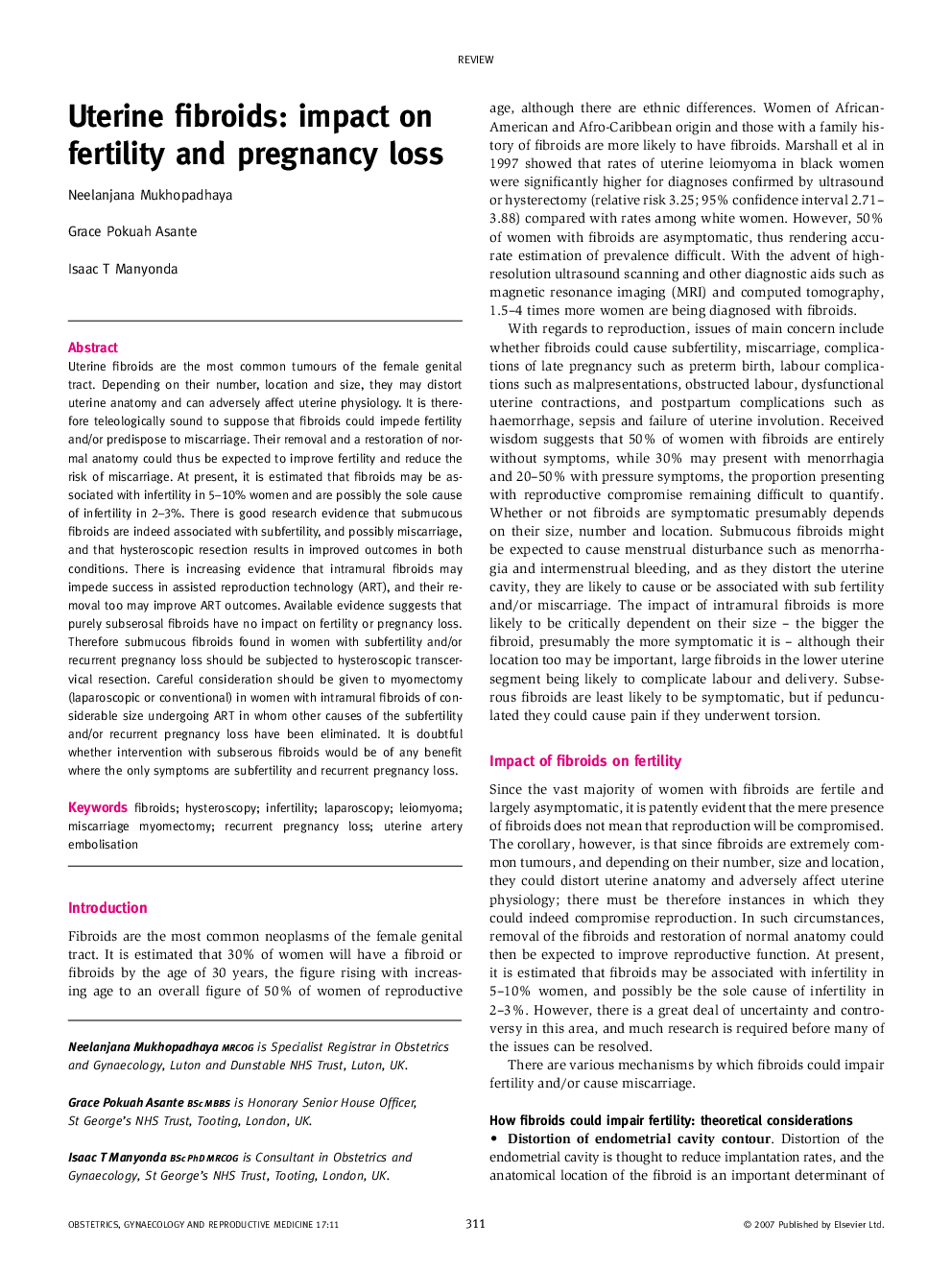| Article ID | Journal | Published Year | Pages | File Type |
|---|---|---|---|---|
| 3967287 | Obstetrics, Gynaecology & Reproductive Medicine | 2007 | 7 Pages |
Uterine fibroids are the most common tumours of the female genital tract. Depending on their number, location and size, they may distort uterine anatomy and can adversely affect uterine physiology. It is therefore teleologically sound to suppose that fibroids could impede fertility and/or predispose to miscarriage. Their removal and a restoration of normal anatomy could thus be expected to improve fertility and reduce the risk of miscarriage. At present, it is estimated that fibroids may be associated with infertility in 5–10% women and are possibly the sole cause of infertility in 2–3%. There is good research evidence that submucous fibroids are indeed associated with subfertility, and possibly miscarriage, and that hysteroscopic resection results in improved outcomes in both conditions. There is increasing evidence that intramural fibroids may impede success in assisted reproduction technology (ART), and their removal too may improve ART outcomes. Available evidence suggests that purely subserosal fibroids have no impact on fertility or pregnancy loss. Therefore submucous fibroids found in women with subfertility and/or recurrent pregnancy loss should be subjected to hysteroscopic transcervical resection. Careful consideration should be given to myomectomy (laparoscopic or conventional) in women with intramural fibroids of considerable size undergoing ART in whom other causes of the subfertility and/or recurrent pregnancy loss have been eliminated. It is doubtful whether intervention with subserous fibroids would be of any benefit where the only symptoms are subfertility and recurrent pregnancy loss.
